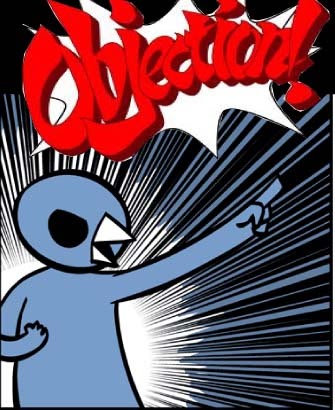Sorry, but soccer practice gives you very little time. Luckily, cool people like Justin Vu cover for you! To read the original,
go here. (Edit: a few changes by me)
1. In the new nations created after the withdrawal of European imperialists, problems occurred including the unfavorable world economy, failed social reforms, and old class, religious, and racial divisions that worsened after independence.
2. Ethnic rivalries have been endemic in decolonized African states because of the arbitrary boundaries that grouped together hostile ethnic and religious groups.
3. In 1972, Bangladesh was created due to the fragmentation of Pakistan.
4. The Ibo people attempted to secede from Nigeria by creating the state of Biafra in 1967. This led to a three year war that ultimately failed.
5. No African leaders have seriously suggested altering the unnatural boundaries established in the colonial era, even with severe conflict issues.
6. The most formidable barrier to economic growth in post-colonial Africa is the consistent and spiraling population increases that overwhelmed economic advances.
7. European colonizers contributed to African population growth by reducing local warfare and preventing the spread of epidemic diseases and famine. This allowed the death rate to decreased while keeping the birth rate the same.
8. Birth rates were generally highest in the continent of Africa.
9. The factors that contribute to the high birth rate of third world nations include old traditions, religious beliefs, and much lower death rates. Also, infant mortality was greatly reduced due to new medical advances.
10. The chief by-products of the population boom in the 3rd world are a large number of children under 15 and most importantly, mass migration to urban areas.
11. 3rd world cities lacked the rapidly expanding industrial sectors that made migrant absorption possible in the West.
12. The urban poor are a volatile factor in the elite political struggles, and they live in slums.
13. 3rd world countries are heavily parasitic and encounter problems of soil depletion and deforestation.
14. 3rd world countries are heavily dependent for survival on food and resources from their own countryside or abroad. Real answer: they depend on the sale of cash crops and minerals to finance industrialization.
15. The export commodity that has been used to improve their roles is nothing specific, but usually the primary products of each country. These are usually food crops and raw materials.
16. Neocolonialism is the dominance that industrialized nations have upon the world economy, therefore still controlling third world countries indirectly.
17. The drawbacks to accepting investment capitals are major concessions and conditionalsthat force situations onto third-world countries.
18. Kwame Nkrumah's response to the failure of his programs was to reinstate authoritarian and dictatorial rule.
19. Nkrumah's Ghana is in what used to be part of the Gold Coast colony. However, the original Ghana is further north and not part of that area.
20. Nkrumah's governmental and development plans often failed miserably because of limited resources and mismanagement.
21. One of the most common elements of African and Asian governments since decolonization is military takeover.
22. Though not specified, four countries that
have experienced military takeovers are Uganda, Myanmar, Congo, and Egypt. Some that did not have ones were India, Kenya, and Zambia. India is the most prominent and most likely answer.
23. Factors that led to the military takeovers in 3rd world countries were usually due to the advantages the military had in crisis situations (better technical training, more likely to use force, anticommunist, repressive).
24. The worst examples of military regimes were Uganda, Myanmar, and Congo.
25. The Muslim Brotherhood was led by Hasan al-Banna.
26. Their philosophy was a revivalist approach to Islam and sweeping social reform which became politicized by the 1930s.
27. The Free Officers movement, made up of military troops, overthrew the Khedive Farouk in 1952.
28. Gamal Abdul Nasser emerged as the head of the Egyptian government following the coup.
29. The reforms of the military government after 1952 included land reforms, state financed education, state subsidies, and stiff restrictions on foreign investments. Many of these reforms misfired.
30. The Egyptian government forced the British and French out of Suez in 1956.
31. The cornerstone of Nasser's development drive was the Aswan Dam project.
32. Anwar Sadat altered Egyptian policies of military government by favoring private initiatives, cutting ties to the Russians and opening the country to Western aid.
33. India was similar to Egypt following decolonization due to the emphasis on socialism and state intervention in the economy.
34. Following decolonization, India was governed by Jawaharlal Nehru of the Congress party..
35. The successes of India included the Green Revolution, industrial and agricultural growth, family planning, literacy, electricity in villages, and high-tech sectors.
36. Ayatollah Khomeini was brought to Iranian power in 1979 through radical revolution.
37. The Iranian revolution of 1979 was similar to the Mahdi revolt of the 1880's.
38. Iran was unlike the other areas of the Third World because of a lack of formal colonization. Instead, it was under a sphere of informal influence divided between Russia and Great Britain, and little infrastructure was built.
39. Development schemes were forestalled in Iran due to Saddam Hussein and his efforts to take advantage of oil-rich provinces. The ensuing First Gulf War swallowed up Iranian resources and energy.
40. Portugal was able to hold on to its colonies in Africa in the mid-1970's.
41. From 1948, the Nationalist party dominated the South African government.
42. The homelands in South Africa furthered racism and separation by designating poor lands for the main ethnolinguistic (tribal) groups.
43. In order the suppress dissent, the South African government prohibited all forms of protest and nonviolent resistance. Organizations such as the African National Congress became illegal, and African leaders were thrown into jail or killed.
44. Nelson Mandela was freed in South Africa in 1990, ushering in new change in South Africa.


